Do you need to remove a hex screw but don’t know how? Don’t worry, we’re here to help! In this article, we will answer some common questions about hex screws and provide tips on how to unscrew them. We’ll also discuss the different types of tools that can be used for this purpose. So whether you’re trying to remove a hex screw from your bike or from a piece of machinery, we have you covered. Let’s get started!
What is a Hex Head Screw?
The head of the screw is designed to be used with a wrench or socket, which allows for greater torque and easier removal. Hex screws are common in many industries, including automotive, plumbing, and construction.There are two main types of hex screws: those with metric threads and those with imperial threads. Metric screws are measured in millimeters, while imperial screws are measured in inches. The most common sizes for both metric and imperial screws are M12 and ⅜-16 respectively.
Hex screws are available in a variety of materials, including steel, stainless steel, brass, and nylon. They can also be plated with zinc or chrome for increased durability. [3]

Why Do Hex Screws Get Stripped?
If you’ve ever tried to remove a hex screw that has been stripped, you know how frustrating it can be. There are a few different reasons why hex screws can get stripped.One reason is that the head of the screw is damaged. This can happen if you use the wrong size wrench or if you try to remove the screw with a power tool.
Another reason hex screws can get stripped is because they’re over tightened. This usually happens when people are trying to make sure the screw is secure. Unfortunately, this can lead to stripping because it puts too much pressure on the head of the screw. [3]
How to Remove Hex Screws
Carve a Screw Driving Slot
Use a sharp knife or a rotary tool fitted with a cutting disc to carve out a slot in the center of the hex head. Be very careful not to damage anything around the screw. Once you’ve carved out a slot, use a flathead screwdriver to turn the screw counterclockwise until it comes out. [3]
Try Using Adjustable Wrench or Locking Pliers
If you’re still having trouble removing the screw, you may need to try using an adjustable wrench or locking pliers. Adjustable wrenches are great for getting a tight grip on screws, while locking pliers can help to prevent the screw from slipping.
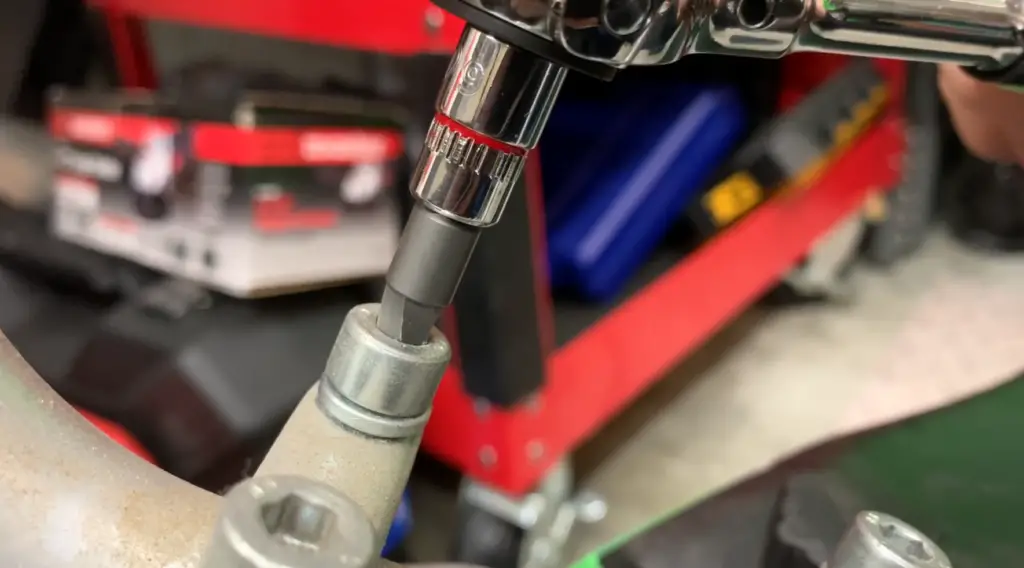
If you don’t have either of these tools handy, you can also try using a pair of needle-nose pliers.
Once you’ve got a good grip on the screw, turn it counterclockwise until it comes loose. If it’s really stuck, you may need to apply some WD-40 or another lubricant to help loosen it up. [3]
Use a Left-Handed Drill Bit
If you’re having trouble removing a hex screw with a regular drill bit, try using a left-handed drill bit. These are designed to unscrew screws that have been tightened too much.
To use a left-handed drill bit, simply attach it to your drill and then insert it into the head of the hex screw. Start the drill and then carefully remove the screw.
Another option is to use an impact driver. Impact drivers are powerful tools that can loosen even the most stubborn hex screws. To use one, simply attach it to your drill and then insert it into the head of the hex screw. Start the drill and then let the impact driver do its work. Once the screw has been loosened, you should be able to remove it by hand.
If you don’t have a left-handed drill bit or an impact driver, you can try using a pair of pliers. Place the jaws of the pliers around the head of the hex screw and then twist the pliers in the opposite direction of the screw. This may take some time and patience, but eventually, you should be able to loosen and remove the screw.
Finally, if all else fails, you can always try drilling out the hex screw. This will damage the head of the screw, but it will allow you to remove it. To do this, simply drill a hole in the center of the hex screw with a regular drill bit. Once you’ve drilled through the head of the screw, you should be able to remove it by hand. [3]
The Hammer and Torx Method
This is a two-person job. One person will need to hold the object steady while the other uses a hammer to drive the Torx bit into the screw head. The key here is to not use too much force, or you could damage the surrounding area. Once the Torx bit is in place, simply turn it counterclockwise and remove the screw.
If you don’t have a Torx bit, you can also use a flathead screwdriver. Just be careful not to slip and damage the surrounding area. [3]
Use a Screw Extractor
If you’re still having trouble removing the screws, you may need to use a screw extractor.
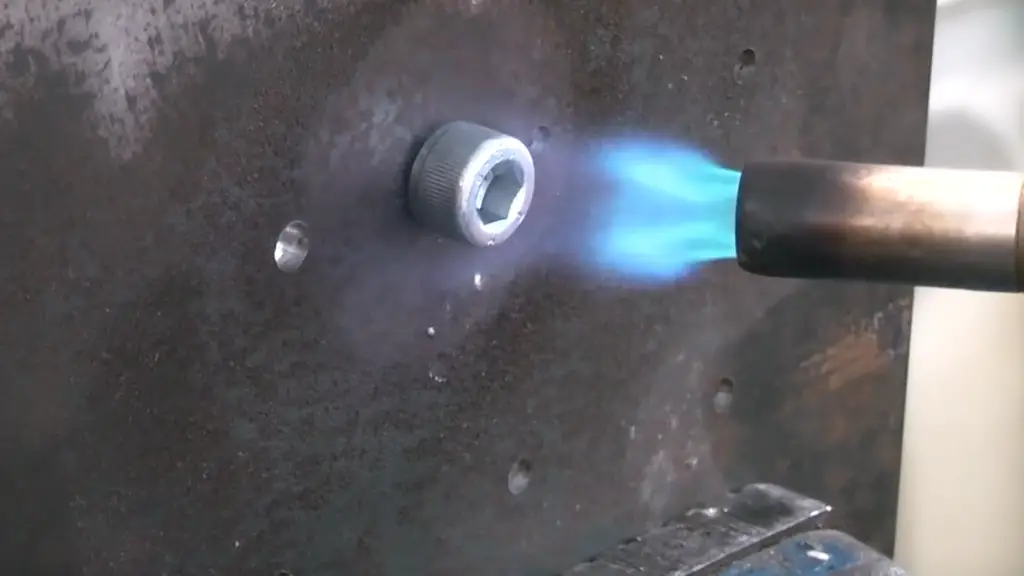
Tips on Preventing Hex Screws Stripping
Use The Proper Screwdriver Size
The number one reason hex screws strip is using the wrong size screwdriver. If the flathead of your screwdriver is too big or too small, it will slip out of the slot as you turn and strip the head. Be sure to use a precision screwdriver set so you can find the right size for each job.
You can also use a power drill with a hex bit but be careful not to over-tighten and strip the heads. [3]
Use Durable Screw Products
There are a few things you can do to make sure your screws are more durable and last longer. First, use high-quality screws. Second, apply a lubricant to the threads before screwing them in. This will help reduce friction and wear on the threads. Finally, don’t over tighten the screws. Just snug them up so they’re tight enough to stay in place without stripping the threads. [3]
Don’t Use Excessive Force
If you find that you’re having trouble removing a hex screw, don’t use excessive force. This can strip the head of the screw and make it even more difficult (if not impossible) to remove.
Instead, try one of the following tips:
- Use a different tool. If you’re using a manual screwdriver and having trouble, try using an electric drill or impact driver. The additional torque might be just what you need to loosen the screw.
- Apply heat. This can expand the metal and make it easier to remove the screw. Just be careful not to overdo it and damage whatever it is you’re working on.
- Use WD-40 or another lubricant. This can help by reducing friction and making it easier to remove the screw. [3]
Make Sure Your Screws Are Correctly Aligned With the Axis
If your screws are not correctly aligned with the axis of the hole, it will be very difficult to remove them. To fix this, you can use a drill bit that is slightly smaller than the screw. Drill a pilot hole into the center of the screw and then try to remove the screw again.
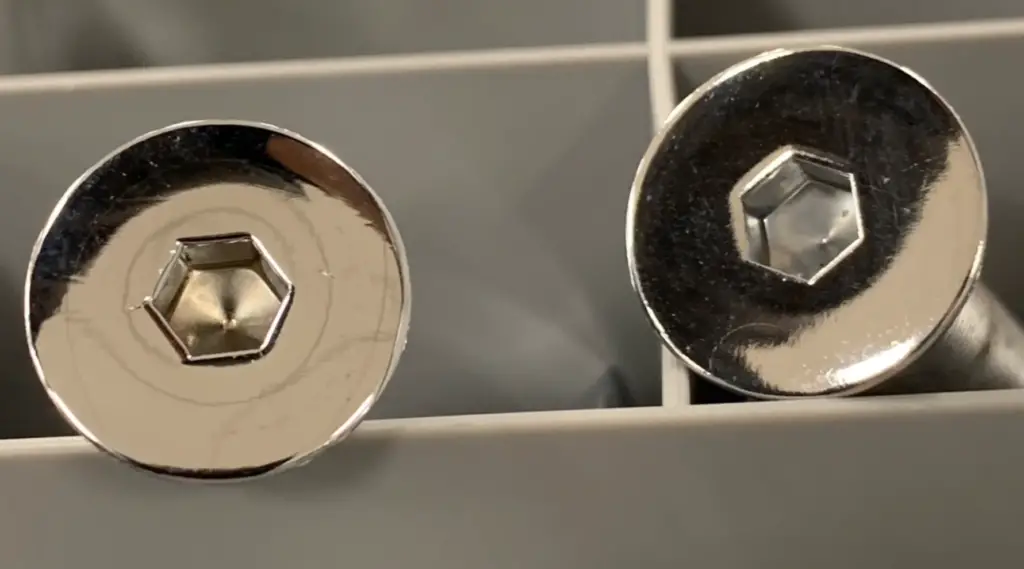
Another method that can be used to remove a hex screw is by using a pair of pliers. Place the pliers on opposite sides of the head of the screw and then turn them in opposite directions. This should loosen the grip of the screws and allow you to remove them easily. [3]
Be Careful On Using Power Tools
Even if you’re experienced in using power tools, it’s always best to take extra care when working with hex screws. Make sure that you’re wearing the proper safety gear and follow all manufacturer instructions. If possible, it’s also a good idea to have someone else around to help guide you and spot any potential hazards. [3]
Way to remove an Allen screw
Use a Torx wrench instead.
There are a few different ways to remove hex screws, but the most common is to use a Torx wrench. This type of wrench is designed specifically for removing hex screws and is available at most hardware stores.
Another option is to use a drill bit that is slightly larger than the screw head. Drill into the center of the screw head until the drill bit breaks through. Then, use a pair of pliers to twist and remove the screw. [2]
Put a rubber band on the screw head.
If you’re having trouble getting a grip on the screw head, try putting a rubber band around it. This will give you something to hold onto and help keep the screwdriver in place.
Another option is to use a pair of pliers. Grip the head of the screw with the pliers and turn it counterclockwise until it loosens. Be careful not to strip the head of the screw. [2]
Apply friction drops to your allen wrench.
If your allen wrench is slipping out of the hex screws, try applying some friction drops to the end. This will provide extra grip and make it easier to remove the screws. [2]
Grip the screw head with channel-lock pliers.
If the head of the screw is slightly recessed, you may be able to get a good grip on it with a pair of needle-nose pliers. If the head of the screw is flush with the surface or protruding, you’ll need to use a different tool.
Place the jaws of the channel-lock pliers around the head of the screw so that they’re perpendicular to the surface. Squeeze the handles together until the jaws bite into the metal. [2]
Strike the screw with a hammer and screwdriver.
If the screw is stubborn, try striking it with a hammer while you turn the screwdriver. The added force might be enough to loosen the screw. Be careful not to damage the surrounding surfaces. [2]
Tap the screw counterclockwise with a center punch.
This will help to loosen the grip of the screw on the metal. You may need to do this a few times before the screw starts to loosen.
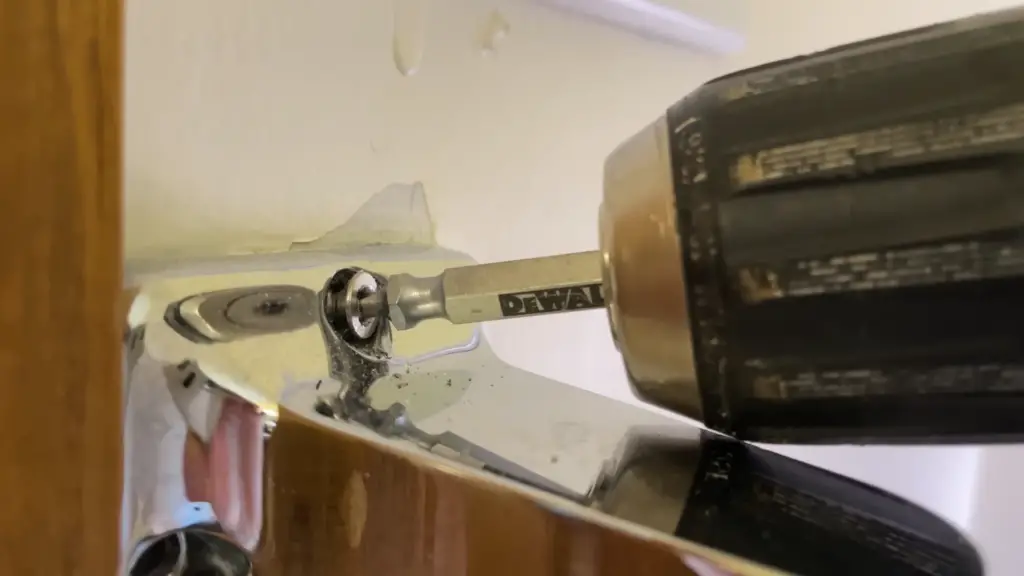
Once the screw has been loosened, use a hex wrench to unscrew it completely. Be sure to hold onto the head of the screw with your other hand so that it doesn’t spin out of control. [2]
Epoxy an old allen wrench to the bolt.
This is a pretty common technique and it works well enough most of the time. The only problem is that if the allen wrench slips, you’re in for a bad time. [2]
Cut a slot in the screw head with an angle grinder
If you’re dealing with a particularly stubborn hex screw, you may need to resort to more extreme measures. One option is to cut a slot in the head of the screw, which will allow you to use a standard flathead screwdriver to remove it.
To do this, first clamp the workpiece in a vise or other similar device. Then, using an angle grinder fitted with a metal cutting disc, carefully cut a slot across the head of the screw.
Drill the screw out.
If you don’t have an easy way to remove the screw, you can try drilling it out. Use a small drill bit and be careful not to damage the surrounding area. Drill slowly at first to get a feel for how the drill bit is biting into the metal. If the screw is difficult to remove, you may need to use a larger drill bit.
Another method is to use a carbide-tipped rotary tool such as a Dremel. Be extra careful not to damage the surrounding area when using this method. [2]
A screw extractor works for both
If you’re looking for an easy way to remove hex screws, then a screw extractor is your best bet. A screw extractor is a tool that can be used to remove both screws and bolts. It works by being inserted into the head of the screw or bolt and then turned in the opposite direction. This will cause the head of the screw or bolt to come off, making it easy to remove.
There are a few different types of screw extractors, so be sure to choose one that is compatible with the type of hex screws you’re dealing with. Otherwise, you may end up damaging the screws or causing them to break entirely. With that said, let’s take a look at how to use a screw extractor to remove hex screws. [1]
FAQ
Is Torx Better Than Hex?
The answer to this question is a resounding yes! Torx head screws are far superior to hex head screws in every way. They are easier to drive, less likely to strip, and provide more torque. If you’re looking for the best possible screw, go with a Torx.
How Do You Screw A Hex Bolt?
Hex bolts, also known as hex cap screws or machine screws, are one of the most common types of fasteners. They are used in a wide variety of applications and are made from a variety of materials, including steel, stainless steel, brass, and aluminum.
Hex bolts are available in a wide range of sizes and lengths to accommodate different applications. The most common size is the 12-24 hex bolt which is used in many standard applications. Hex bolts are also available in metric sizes.
Are Allen and Hex The Same Screw?
The first question we often get is whether or not Allen and hex screws are the same. The answer is yes! Hex screws, also known as six-sided screws, are a type of Allen screw. These screws have a hexagonal recess in their head, which allows them to be turned with a hex wrench or driver.
Hex screws are some of the most common types of screws out there and can be found in everything from furniture to machinery. While they’re most commonly used in woodworking applications, they can be used for metalwork as well.
What Are Hex Screws Used For?
Useful Video: 5 Easy Tricks HOW to Remove Rounded Stripped Allen Hex Bolts FCA Screw
Conclusion
If you’re still struggling to remove a hex screw, there are a few other methods you can try. For example, you could use a pair of needle-nose pliers or a set of vise grips. You could also try heating up the screw with a soldering iron or heat gun.
Whichever method you choose, make sure that you take care not to damage the surrounding area. With a little patience and perseverance, you should be able to remove even the most stubborn hex screws. Thanks for reading!
References
- https://www.hunker.com/13408360/how-to-remove-a-hex-screw
- https://www.wikihow.com/Remove-a-Stripped-Allen-Screw
- https://www.drillanddriver.com/how-to-remove-a-stripped-hex-screw/






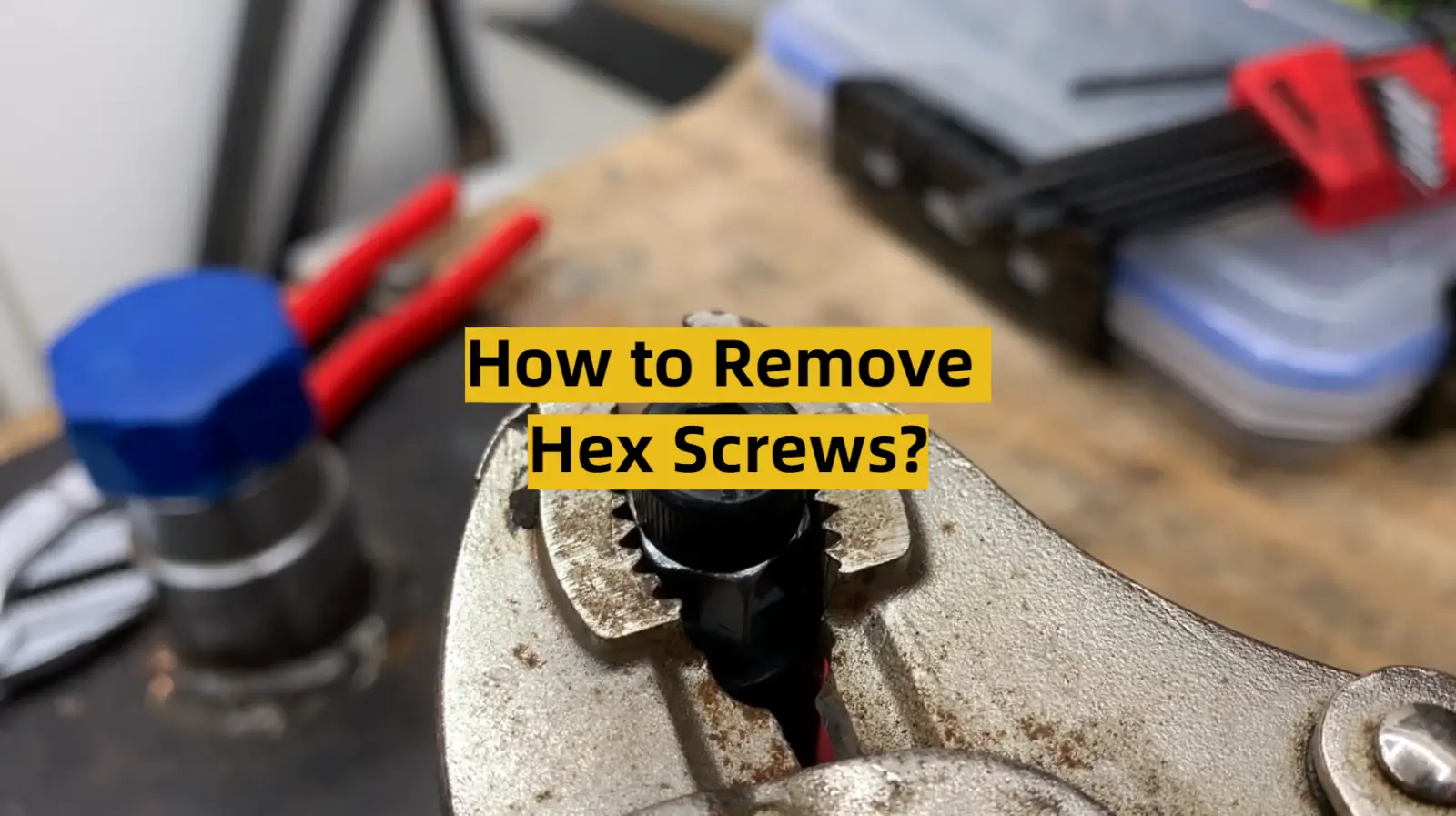




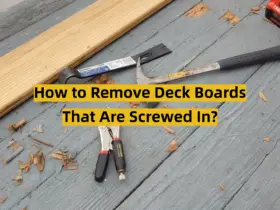
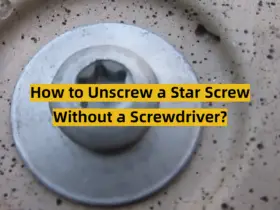
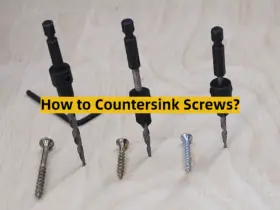
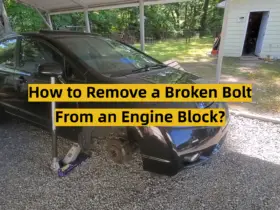
Leave a Reply